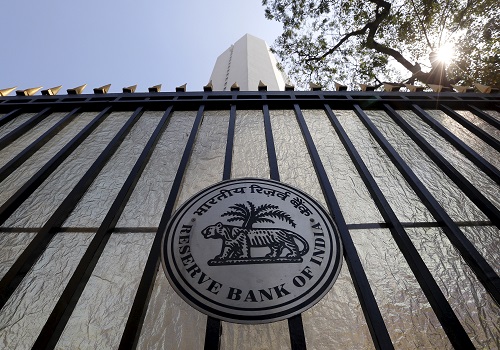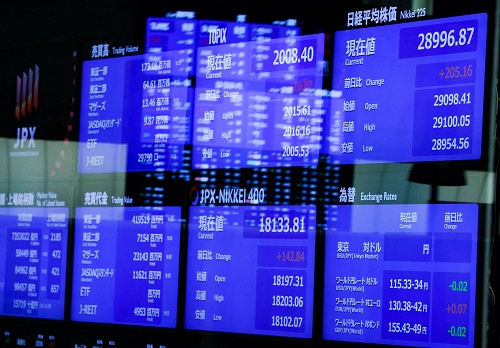Turmeric trading range for the day is 13832-14380 - Kedia Advisory

Follow us Now on Telegram ! Get daily 10 - 12 important updates on Business, Finance and Investment. Join our Telegram Channel
Gold
Gold prices edged up by 0.02% to settle at ?71,927 as persistent inflation data limits the Federal Reserve's ability to cut interest rates aggressively, despite signs of a cooling labor market. Core CPI, excluding food and energy, rose 0.3% in August, up from 0.2% in July and exceeding forecasts of 0.2%, indicating ongoing inflationary pressure. The U.S. Federal Reserve is expected to begin a series of interest rate cuts next week, starting with a quarter-percentage-point reduction, following data showing a 2.5% year-over-year rise in the consumer price index. However, core inflation, excluding volatile food and energy prices, remains elevated at 3.2%. Traders see just a 15% chance of a larger half-point cut at the Fed’s September 17-18 meeting. In India, gold discounts surged to a seven-week high, reaching up to $13 per ounce, as rising prices weakened demand. Meanwhile, Chinese demand remains soft amid record prices, with gold being offered at discounts of up to $8. The World Gold Council (WGC) reported that India’s gold demand fell by 5% in the June quarter but is expected to recover in the second half of 2024 due to a reduction in import duties and favorable monsoon rains. The festival season beginning in September is likely to boost demand. Technically, the gold market is under fresh buying pressure, with open interest rising by 0.07% to 14,800. Support is currently seen at ?71,615, and a break below this could test the ?71,305 level. On the upside, resistance is expected at ?72,230, and a move above this could push prices toward ?72,535.
Trading Ideas:
* Gold trading range for the day is 71305-72535.
* Gold settled flat as inflation data has limited Fed’s ability to cut interest rates aggressively.
* US inflation data has limited the Fed’s ability to cut interest rates aggressively despite signs of a cooling labor market.
* Data showed the consumer price index rose 2.5% from a year earlier, but excluding volatile food and energy prices it was up 3.2%.
Silver
Silver prices settled up by 0.92% at ?84,450, driven by growing uncertainty around the size of the Federal Reserve's rate cut in the upcoming meeting. The core Consumer Price Index (CPI), which excludes food and energy, rose 0.3% in August, above the expected 0.2% and July's 0.2% increase, signaling ongoing inflationary pressures. On a year-over-year basis, core CPI climbed 3.2%. Meanwhile, headline CPI grew 0.2% month-over-month and 2.5% annually, marking its fifth consecutive month of easing due to lower gasoline prices. Federal Reserve policymakers, such as San Francisco Fed President Mary Daly and Chicago Fed President Austan Goolsbee, emphasized the need to adjust monetary policy as inflation slows and economic conditions evolve. They signaled that interest rate cuts may be needed soon, with further reductions likely over the next year. In India, silver imports are expected to nearly double this year due to rising demand from the solar panel and electronics industries, as well as increased investor interest, anticipating better returns than gold. In the first half of 2024, India’s silver imports surged to 4,554 tons from just 560 tons a year ago, reflecting stockpiling amid depleted inventories in 2023 and concerns over rising prices. Technically, the market is witnessing short covering, with open interest dropping by 4.71% to 30,113 as prices rose by ?769. Silver is currently supported at ?83,390, and a break below this level could lead to a test of ?82,330. On the upside, resistance is seen at ?85,280, with a move above potentially pushing prices to ?86,110.
Trading Ideas:
* Silver trading range for the day is 82330-86110.
* Silver gains as there is fair amount of uncertainty around the size of the cut at next week's Federal Reserve meeting.
* US core CPI, rose 0.3% in August, above forecasts of 0.2% and up from 0.2% in July.
* The headline CPI rose 0.2% month-over-month and 2.5% annually, marking its fifth straight month of easing
Crude oil
Crude oil prices surged by 2.84% to settle at ?5,690, driven by concerns over potential disruptions to U.S. output from Hurricane Francine, offsetting worries about weak global demand. OPEC revised its global oil demand growth forecast for 2024, reducing it to 2.03 million barrels per day (bpd) from the previous estimate of 2.11 million bpd, largely due to weaker-than-expected demand from China. China's forecast was trimmed to 650,000 bpd from 700,000 bpd for 2024, reflecting economic challenges. Meanwhile, the U.S. is slowly replenishing its Strategic Petroleum Reserve, purchasing nearly 6 million barrels of oil for delivery in early 2025 after significant sales in 2022. China’s crude oil imports in August dropped 7% year-on-year, totaling 49.10 million metric tons, though this was an improvement from July’s low of 42.34 million tons, the lowest level since September 2022. This reflects weak refining margins and low fuel consumption. Additionally, U.S. crude oil inventories rose by 0.833 million barrels, slightly below expectations, while gasoline stocks increased by 2.311 million barrels, far exceeding forecasts. Distillate stockpiles, including diesel and heating oil, also rose significantly. From a technical perspective, crude oil is experiencing short covering, with open interest dropping by 21.27% to 17,209. Prices are currently supported at ?5,571, and a break below this level could see a test of ?5,452. On the upside, resistance is expected at ?5,764, and a move above this could push prices toward ?5,838. The market is showing signs of strength, despite broader concerns about global demand.
Trading Ideas:
* Crudeoil trading range for the day is 5452-5838.
* Crude oil gains amid concern about disruptions to U.S. output from Hurricane Francine.
* Crude oil inventories in the US rose by 0.833 million barrels
* Gasoline stocks increased by 2.311 million, against forecasts of a 0.1 million fall.
Natural gas
Natural gas prices rose by 1.64% to ?191.8, driven by reduced output as oil and gas producers curtailed operations in preparation for Hurricane Francine, which is expected to hit the Louisiana coast. Despite the hurricane potentially reducing gas demand by disrupting liquefied natural gas (LNG) exports and power outages, the market responded to the anticipated production cuts. U.S. gas output in the Lower 48 states averaged 102.1 billion cubic feet per day (bcfd) in September, down from 103.2 bcfd in August. On a daily basis, output dropped by 2.7 bcfd over the past two days, reaching a three-month low of 100.0 bcfd as energy firms preemptively shut down Gulf Coast operations. Meteorologists forecast warmer-than-normal weather across the U.S. through late September, keeping gas demand strong. Average gas demand, including exports, is expected to rise from 99.4 bcfd this week to 99.8 bcfd next week, though slightly lower than earlier forecasts. The U.S. Energy Information Administration (EIA) predicts gas production will ease from a record 103.8 bcfd in 2023 to 103.4 bcfd in 2024, with demand hitting a new record of 89.9 bcfd in 2024 before slightly easing in 2025. U.S. utilities added 13 billion cubic feet of gas to storage in the final week of August, less than expected, which helped support prices. Despite this, overall gas stocks remain 6.6% higher than last year and 10.7% above the five-year average. Technically, the market is experiencing short covering, with a 4.7% drop in open interest to 33,282 as prices rose by ?3.1. Natural gas finds support at ?186.9, with a potential test at ?182.1, while resistance is seen at ?196.1, with a move above potentially leading to ?200.5.
Trading Ideas:
* Naturalgas trading range for the day is 182.1-200.5.
* Natural gas gains as producers cut output for Hurricane Francine
Prices rose even though Francine was expected to cut gas demand by curtailing flows to Gulf Coast LNG export plants
* Gas output in the Lower 48 U.S. states slid to an average of 102.1 billion cubic feet per day (bcfd) so far in September
Copper
Copper prices rose by 0.92% to settle at ?792.2, driven by supply concerns and mixed production reports from Chile, the world’s top copper producer. Chile’s state miner, Codelco, saw a significant 10.7% decline in copper production in July, producing 111,400 metric tons. In contrast, BHP-controlled Escondida mine increased its output by 29% to 106,500 tons in the same period. However, production at the Collahuasi mine, jointly run by Glencore and Anglo American, decreased by 6% to 47,000 tons. Meanwhile, China, the world's largest copper consumer, saw its manufacturing activity hit a six-month low in August, impacted by falling factory gate prices and weak demand. This has led analysts to forecast slower growth in copper demand. Chile’s copper commission, Cochilco, lowered its average copper price forecast for 2024 to $4.18 per pound from $4.30, citing economic weakness in key markets. Globally, the refined copper market posted a 95,000 metric ton surplus in June, up from a 63,000-ton surplus in May, according to the International Copper Study Group (ICSG). For the first half of the year, the market had a surplus of 488,000 metric tons, compared to 115,000 metric tons a year earlier. On the technical front, copper prices are seeing short covering, with open interest declining by 5.78% to 11,245. Support is currently at ?787.5, and a break below could lead to a test of ?782.9. Resistance is likely at ?795.1, and a move above this could push prices towards ?798.1. The market remains influenced by both supply disruptions and demand challenges.
Trading Ideas:
* Copper trading range for the day is 782.9-798.1.
* Copper gains as copper output from Chile's Codelco slides nearly 11% in July
* Chile's state-owned copper commission Cochilco lowered its forecast for the average price of copper in 2024 to $4.18 per pound
* China's unwrought copper imports slid in August to a 16-month low, customs data showed.
Zinc
Zinc prices rose by 1.83% to ?259.3, driven by optimism surrounding a potential interest rate cut by the Federal Reserve. In China, exports increased by 4.6% year-on-year in August 2024, down from 7% in July, while imports rose 2.5% year-on-year, surpassing expectations but easing sharply from the previous month. These figures reflect the mixed pace of recovery in China, a significant zinc consumer. LME zinc inventories also showed notable changes, with total stock rising 2.6% to 217,575 tonnes in August. Spain-origin zinc dominated, accounting for 38.7% of total LME inventory. India-origin zinc stocks rose to 63,050 tonnes, and Australia-origin zinc also increased, signaling a well-supplied market. The global zinc market surplus narrowed significantly to 8,700 metric tons in June, down from 44,000 tons in May, according to the International Lead and Zinc Study Group (ILZSG). However, for the first half of 2024, the global surplus stood at 228,000 tons, still lower than the 452,000-ton surplus in the same period last year. China's refined zinc production in July fell by 10.3% month-on-month to 489,600 metric tons, affected by adverse weather and production cuts in several regions. The production decline exceeded expectations due to heavy rainfall in Sichuan, unexpected cuts in Yunnan, Guangdong, and Guangxi, and maintenance activities across various provinces. Technically, the zinc market is under short covering, with open interest dropping by 17.72% to 2,094 as prices climbed ?4.65. Zinc has immediate support at ?256.2, with a break below potentially testing ?253. Resistance is expected at ?261.2, and a move above this level could lead prices toward ?263.
Trading Ideas:
* Zinc trading range for the day is 253-263.
* Zinc gains amid optimism surrounding a likely interest rate cut from the Federal Reserve this month.
* Exports from China increased by 4.6% year-on-year in August 2024, moderating from a 7% rise in July.
* Total open-tonnage volumes of zinc in LME warehouses amounted to 217,575 tonnes on August 30, up 2.6% end of July
Aluminium
Aluminium prices rose by 1.57% to settle at ?223, as demand shows signs of recovery entering the traditional peak season. Consumption is gradually picking up, and inventory reduction appears to have begun. LME aluminium inventory has decreased by 22% over the past three months, now at 877,950 tons, its lowest level since May. However, concerns about global economic growth continue to limit the upside potential for aluminium and other industrial metals. China's manufacturing activity sank to a six-month low, reflecting challenges in demand as factory owners struggle for orders. Aluminium inventories in warehouses monitored by the Shanghai Futures Exchange fell by 1.4% last week, indicating reduced supply pressure. In July, China exported 146,708 tons of alumina, a 9.6% increase year-on-year, with 92.5% of these exports going to Russia. China's aluminium production also surged in July, reaching 3.68 million metric tons, the highest monthly output since 2002. Despite recent declines in aluminium prices, producers ramped up operations due to profitable margins. For the first seven months of 2024, China’s aluminium output increased by 6.7% year-on-year to 25.19 million tons. Global aluminium production rose by 2.4% year-on-year in July to 6.194 million metric tons, with China's output climbing by 2.5% and the rest of Asia seeing a 3.3% increase. Technically, aluminium is under short covering, with open interest falling by 3.02% to 3,631. Prices are currently supported at ?220.4, and a break below this level could test ?217.8. On the upside, resistance is seen at ?224.5, and a move above this could push prices towards ?226.
Trading Ideas:
* Aluminium trading range for the day is 217.8-226.
* Aluminium gains as demand side is entering the traditional peak season, consumption is gradually recovering
* Aluminium stocks were broadly unchanged, and on-warrant stocks pushed up to 345,300 tonnes in August
* Aluminium inventories in warehouses monitored by the Shanghai Futures Exchange fell 1.4% from last Friday
Cottoncandy
Cottoncandy prices rose by 0.5% to settle at ?58,610, driven by concerns over reduced acreage in the current kharif season, which is down by 9% to 110.49 lakh hectares (lh) compared to 121.24 lh last year. The Cotton Association of India (CAI) expects the acreage to be around 113 lh this year, down from 127 lh in the previous year. Farmers are shifting to other crops due to lower cotton yields and high production costs. Additionally, increased cotton exports to Bangladesh have tightened the cotton balance sheet, with exports rising unexpectedly from 15 lakh bales to 28 lakh bales due to strong demand. India's cotton production and consumption are estimated at 325 lakh bales each for the 2023-24 season, while imports will be 13 lakh bales. The gap of 15 lakh bales will be reduced from last year's stock. Spinning mills are holding 25 lakh bales, ginners 15 lakh bales, and the Cotton Corporation of India 20 lakh bales, with another 10 lakh bales expected to arrive in August-September. Globally, the 2024-25 cotton balance sheet has been revised, with lower production, consumption, and ending stocks. World production is reduced by 2.6 million bales, primarily due to lower output in the U.S. and India, while global consumption is down nearly 1 million bales, led by China. Technically, the market is experiencing short covering, with open interest falling by 2.22% to 132. Cottoncandy has support at ?58,300, and a break below this could test ?58,000. Resistance is seen at ?58,850, and a move above this could push prices to ?59,100.
Trading Ideas:
* Cottoncandy trading range for the day is 58000-59100.
* Cotton gains as acreage in cotton is down by around 9 percent
* CAI predicts acreage to be around 113 lh this year, up from 127 lh in the previous year.
* Global cotton production cut by 2.6 million bales; lower in US, India.
* In the global 2024/25 cotton balance sheet, beginning stocks, production and consumption are increased.
Turmeric
Turmeric prices fell by 0.89% to ?14,042, driven by news of increased sowing in key growing regions. In Indonesia, dry weather has accelerated harvesting, contributing to peak production levels. However, the downside was limited by tighter supplies in the domestic market and emerging buying interest from stockists. Export opportunities are expected to face challenges due to anticipated volatility in Bangladesh. Additionally, some farmers are holding back stocks, anticipating a price rise, which is lending support to the market. Increased sowing has raised concerns about potential oversupply. In regions like Erode, sowing is reported to have doubled compared to last year, with Maharashtra, Telangana, and Andhra Pradesh also seeing a 30-35% increase in sowing. Turmeric acreage is expected to rise from 3-3.25 lakh hectares last year to 3.75-4 lakh hectares this year. Despite the increased sowing, tighter supplies from last year and stock depletion are expected to limit availability in the 2025 season. Turmeric exports during April-June 2024 fell by 19.52%, with 46,497.99 tonnes exported, compared to 57,775.26 tonnes during the same period in 2023. Imports, however, surged by 485.40% during the same period, reflecting increased foreign interest in the Indian market. Technically, the turmeric market is experiencing long liquidation, with open interest dropping by 0.73% to 15,645 as prices fell by ?126. Support is seen at ?13,938, and a break below this level could test ?13,832. On the upside, resistance is expected at ?14,212, with a move above potentially pushing prices to ?14,380.
Trading Ideas:
* Turmeric trading range for the day is 13832-14380.
* Turmeric ended with losses amid news of increased sowing.
* However downside seen limited amid tighter supplies in the market and emerging buying from stockists.
* In Indonesia, dry weather has accelerated harvesting, which is currently at peak levels.
* In Nizamabad, a major spot market, the price ended at 14349.7 Rupees gained by 0.14 percent.
Jeera
Jeera prices rose by 0.83% to settle at ?25,570, supported by strong domestic and export demand amid tight global supplies. Farmers holding back their stocks, anticipating better prices, also contributed to the price increase. However, the upside remained limited due to expectations of higher production. Jeera production for the current season is expected to rise by 30% to 8.5-9 lakh tonnes, thanks to a significant increase in the sowing area, particularly in Gujarat (104%) and Rajasthan (16%). Globally, jeera production has surged, with China’s output increasing to 55-60 thousand tons from 28-30 thousand tons. Increased production in Syria, Turkey, and Afghanistan, driven by high prices in the previous season, is expected to further weigh on prices. As new supplies from these regions enter the market, cumin prices are likely to decline. Reduced export trade has also contributed to this downward pressure. Despite this, India's jeera exports during April-June 2024 rose by 46.56% to 73,770.58 tonnes compared to the same period in 2023. However, exports in June 2024 saw a 29.12% drop compared to May, although they were 60.13% higher than June 2023. Technically, the jeera market is under fresh buying pressure, with open interest increasing by 1.11% to 1,905. Prices are currently supported at ?25,340, and a break below could lead to a test of ?25,100. On the upside, resistance is seen at ?25,780, and a move above this could push prices toward ?25,980.
Trading Ideas:
* Jeera trading range for the day is 25100-25980.
* Jeera gains amid robust domestic and export demand besides tight global supplies.
* However upside seen limited as the expectation of higher production weighed on the prices.
* Turkey anticipates producing 12-15 thousand tons, while Afghanistan's output could double.
* In Unjha, a major spot market, the price ended at 25589.25 Rupees dropped by -0.46 percent.
Views express by all participants are for information & academic purpose only. Kindly read disclaimer before referring below views












 320-x-100_uti_gold.jpg" alt="Advertisement">
320-x-100_uti_gold.jpg" alt="Advertisement">









